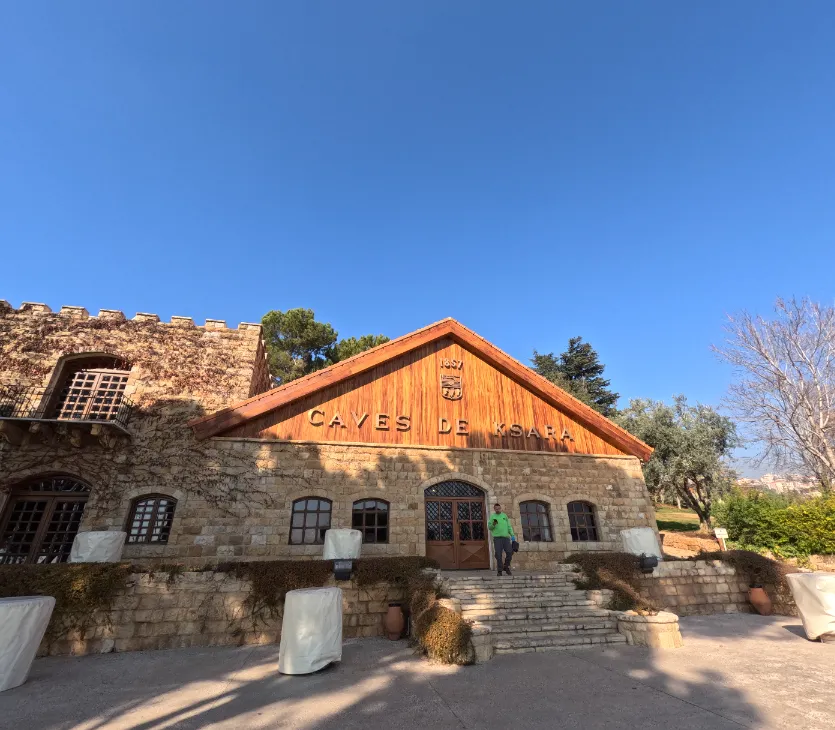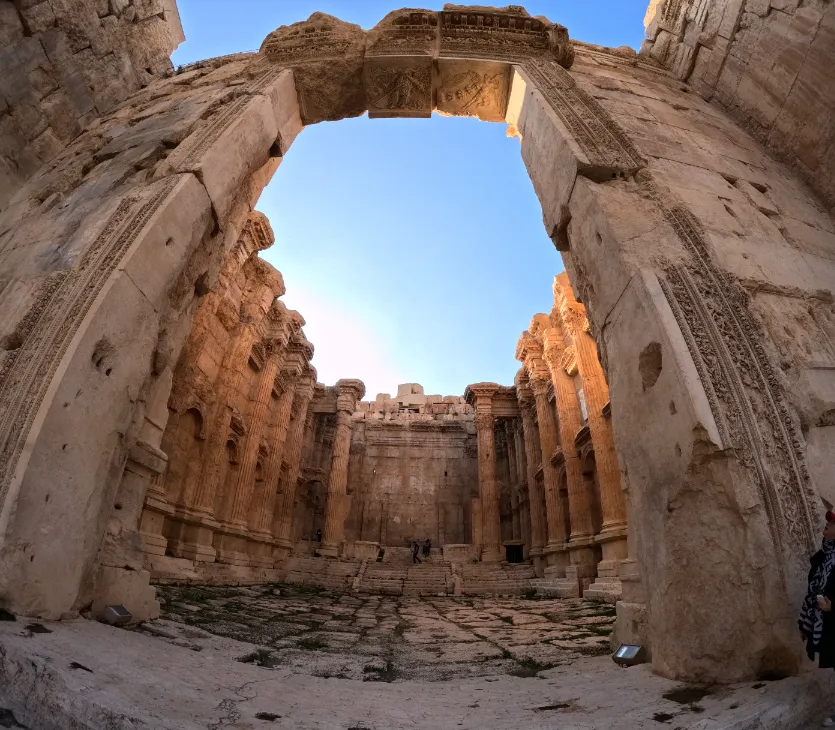Beqaa Valley
The morning was similar to the morning of the previous day, with me waking up after 08:00 and freshening up before going for a heavy breakfast and 3 cups of coffee. The sleep was decent but when you choose a hostel then be aware that you will stay with strangers from different parts of the world. My decent sleep included snoring from one hostel mate.
I put my electronics on charge, but realized there was no power supply. Lebanon is currently facing an electricity crisis, and you will see power cuts for several hours. The locals either rely on solar energy or generators. I was expecting more darkness in the country, but despite the electricity crisis they managed to light up Christmas attractions. You can notice a lot of places without street lights and completely dark. This doesn’t make Lebanon a dangerous place. You have good Lebanese and Syrian refugees to help you.
At the breakfast table I sat next to a Belgium couple and we had a short chat. My whole life was a lie when I came to know that French fries are from Belgium.
The Roman Ruins are in Baalbek, a city in the Beqaa Valley about 80 kilometers from Beirut. It usually takes 1.5–2 hours to get there. Hezbollah, a powerful political party in Lebanon primarily controls the region. Though the party is named a terrorist group by more than 25 countries, including the United States and the European Union.
It’s a full day trip and the first stop is Caves De Ksara. It’s a winery that claims to have been making wine since 1857. The winery is entirely inside the Roman Cave. I thought we needed to take a paid tour of the winery, but we didn’t find any arrangements. We explored the winery on our own and at one point I lost the direction to get out because of narrow lanes and the maze-like structure. This was my second visit to a winery and before this I did a winery tour in Armenia. It was dark inside the caves so I couldn’t take many photos.

I asked for the restroom at the winery and got light before we stopped at Baalbek. You don’t know what is there for you. We left the winery and hit the street again.
We started crossing check points, but it was easy. I understand from Hassan that you have to go through these check points so security forces can stop smuggling and other illegal activities.
I saw military personnel on posters, leaders, and even Bashar al-Assad, President of Syria, as we drove to the eastern side of Lebanon. The only relevant thing came in my mind about Assad is that the Syrian border from Beqaa Valley is only 50 KM away. The area is traditional and doesn’t have tall or big structures. The feeling was different.
We asked Hassan to stop for coffee and snacks at a shop next to a mosque. I ordered a coffee and had potato chips. It was not satisfying, but I needed energy. We drove a bit longer and reached the ruins. There were Syrian refugees selling food, packaged water, and I believe Roman coins. A old gentleman showed us a ticket window and I bought a ticket. It was a large area with huge structures. The Baalbek is home to a few Roman temples. It took us around 1.5 hours to explore the complex and we experimented with our photo session. I remember when I was struggling to keep my mobile phone on rocks to get some shots and a passer-by offered to take my photos. Little did he know that I was experimenting with my photos on this solo trip. I got my best photos from Baalbek.


Hassan suggested we visit one more place – the Stone of the Pregnant Woman in Lebanon. I was feeling hungry so I told Hassan to stop at any local shop for a quick snack. I ordered a Pepsi and bags of chips. The local shop was in poor condition but they had a modern, huge coffee machine. I sat at a table and the young boy who was managing it sat on a sofa and watching a daily soap. I asked him if it was a Lebanese show and he told me it was a Syrian daily soap. I feel pain for the Syrians. They are hardworking and talented. Before the start of the Syrian Civil War, 8.5 million tourists visited Syria in 2010 and declined to 98% by 2015.
We left the store and drove to the Stone of the Pregnant Woman, which is situated in an ancient quarry. I didn’t find it interesting. It was super quick and we left the place for underground caves. It was around 15:30 and I was feeling a bone chilling wind. Hassan asked locals for directions and we reached the caves in 10–15 minutes. It wasn’t a tourist attraction and it wasn’t maintained.
We left around 16:00 and decided to have dinner at an Indian restaurant in Beirut. I was surprised to find so many Indian restaurants in Beirut on maps. It was a long drive from Baalbek, so I pulled my portable speaker and started playing Bollywood music loudly. Hassan told me I could use the car’s Bluetooth and we played Bollywood songs loudly till we reached Beirut.
I know that in Yerevan (Armenia) there were only 2-3 Indian restaurants. Claudia told me that she works with a bunch of Indians in Dubai and that she’s fond of Indian food. She was quick to say yes to tonight’s dinner at an Indian restaurant. I picked Al Hindi (Al Hind in Arabic means India) restaurant and Hassan dropped us off. The restaurant is part of a fancy hotel and I found myself out of place with my tired look. Though there were only 2-3 tables occupied.
I took the control and ordered for Claudia and myself. We ordered a combination of roti, daal, and one sabzi. I was quite disappointed by the food. The place was run by non-Indians and it was evident that the food wouldn’t be interesting. I hate to write this but believe me, Indian restaurants outside of India have brought good taste to many countries.
Attractions of the day:
- Caves De Ksara
- Baalbek
- Stone of the Pregnant Woman
- Underground Caves
- Al Hindi Restaurant